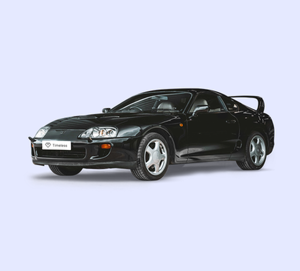
The markets are on edge. After a brief post-election rally, the S&P 500 has tumbled over 6% in days, with the Nasdaq 100 down over 9% from its February peak.
What’s causing the panic? One word:trade. The latest wave of aggressive U.S. tariff policies is shaking global supply chains, fueling inflation fears, and sending the Volatility Index (VIX) — Wall Street’s “fear gauge” — soaring past 25, a level that signals heightened market uncertainty and increased investor fear. Meanwhile, 61% of U.S. investors now expect stock prices to fall over the next six months, a level of pessimism not seen since the 2008 financial crisis.
And it’s not just the stock market feeling the pressure. Bitcoin is also reacting, dipping below €80,000 — a 15% drop from January highs. While often referred to as “digital gold,” its volatility makes it a tough choice for risk-averse investors.
In uncertain times, tangible assets like fine watches, vintage cars, rare whiskey, and art have historically served as a safe haven. Here’s why:

The coming years under the Trump administration are likely to bring increased uncertainty to financial markets. Regardless of stock market exposure, investors would be wise to diversify broadly — both across sectors and regions.
As inflation climbs and instability grows, alternative assets aren’t just a hedge — they’re an opportunity. History proves it: gold soared 50% after the 2008 crash and 30% during the 2020 pandemic. Collectibles such as art, wine, whisky, classic cars, and watches serve as stabilizing forces in a portfolio, offering both growth potential and protection against market volatility.
Smart investors recognize that tangible assets provide stability in uncertain times. Those who diversify now will be best positioned for the years ahead.
Audemars Piguet Royal Oak Ref. 14700BC

Picasso, Étude pour Compotier, 1950

Toyota Supra
3.0 MK4
